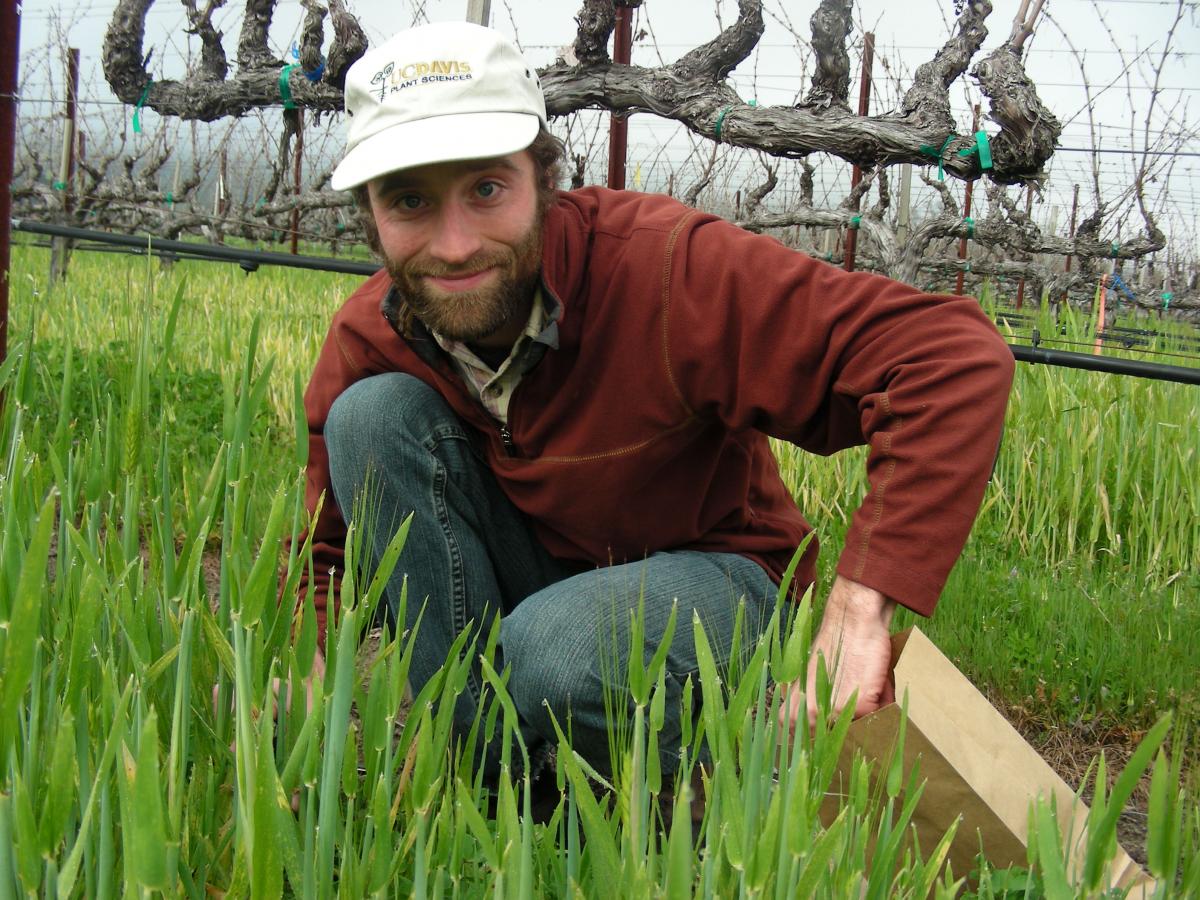Fertilization Methods Reduce Greenhouse Gas Emissions
Nitrogen (N) fertilizers are widely used in modern agriculture. They produce high yields and play an integral role in feeding the global population.

Unfortunately, their use in “fertigation” – using fertilizers dissolved in water to irrigate crops – has destructive effects on the environment. This use of N fertilizers causes the release of the greenhouse gas nitrous oxide (N2O), contributing to global warming. It can also aggravate the leaching of nitrates (NO3-), polluting local bodies of water.
The Smart Laboratory, run by Associate Professor of Plant Physiology, Viticulture and Enology David R. Smart, is working to limit the damage. Lab members believe that “we can significantly reduce emissions of harmful nitrous oxide by modifying fertigation practices, including: the application, seasonal timing of fertigation, amount of fertigation solution applied, concentration of N in the applied water, the species of N in the applied water, and the timing of N-application within a fertigation."
Those working together on the challenge include doctoral students Michael Wolff, Maziar Kandelous and Andres Olivos; along with technical staff member Christine Stockert. UC faculty collaborators include Patrick Brown (Professor of Plant Nutrition, Plant Sciences), Jan Hopmans (Professor of Hydrology, Land, Air and Water Resources), and Jiri Simunek (Professor of Hydrology at UC Riverside and developer of the Hydrus model – a program that predicts water, temperature and chemical changes in the soil).
One of the project’s main goals is to compare two fertigation practices in an almond orchard – one using the current “conventional” method and the other using the newer practice of high-frequency low-nitrogen fertigation. “In the newer, experimental method, there is the same overall quantity of N used, but it is now divided among 14 applications, instead of four,” explains Wolff.
The project promotes sustainability by seeking more efficient methods of fertigation. Firstly, the results should describe which of the two practices is best for growers in optimizing crop N uptake, reducing nitrate leaching into groundwater, and reducing emissions of the greenhouse gas nitrous oxide. Secondly, the data being assembled will show how the Hydrus model can be used to design more efficient fertigation strategies.
Early funding for the project came from internal sources and a Jastro Research Grant from the Soils and Biogeochemistry Graduate Group. Last fall, the Smart Lab received an award for a two and half year project from the California Department of Food and Agriculture’s Specialty Crops Block Grant Program. “We had already gathered three months of data in one orchard and determined that the study was feasible using the methods proposed,” said Wolff. Under their award, the Smart Lab will conduct two seasons of data gathering, followed by a year for analysis and publication. The project is expected to be completed in July 2015.
Ultimately, the project team seeks to demonstrate the feasibility of using a hydrological model (HYDRUS 2D/3D) to predict nitrogen oxide emissions on a wide range of soils. “In that way, growers and scientists will be able to model different fertigation strategies to predict the fate of the nitrogen they apply, and thus plan better irrigation and fertilization schedules and methods,” says Wolff. Which in turn will not only benefit the crops that feed us, it will help to sustain our planet's environment.
This is just another example of what makes UC Davis America's 'Coolest School'.
